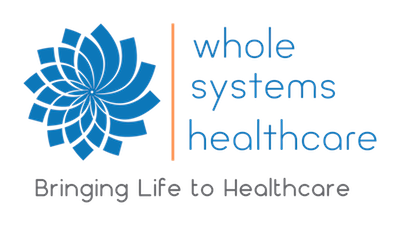Synopsis
- B vitamins are necessary for energy metabolism and creating the essential building blocks of the physical body.
- They represent an aspect of Spleen and Stomach qi in Chinese Medicine, as well connecting to the creation of Blood and jing/essence.
- Though serious deficiencies are rare in the U.S., the widespread presence of Spleen qi deficiency suggests subclinical B vitamin deficiency may be more common than expected.
B vitamins are a group of nutrients that are essential to numerous processes in the body. The list consists of thiamine (B1), riboflavin (B2), niacin (B3), pantothenic acid (B5), pyridoxine (B6), biotin (B7), folate (B9), and cobalamin (B12). Most of us know about them, as they are an essential part of every multivitamin supplement. As a group they are involved primarily in the chemical reactions of energy metabolism, as well as synthesis of a variety of compounds necessary to life. In an attempt to understand these vitamins as a system, let’s examine them as a group, looking for commonalities of function, and common symptoms of deficiency. Individual aspects can be explored if necessary.
B Vitamins in Western Physiology
Most of the B’s are involved in the catabolism (breakdown) of energy substances: carbohydrates, proteins, and fats. A number of them participate in redox reactions that renew various antioxidants in the system, helping to keep free radicals generated in metabolism from damaging body structures. Several of them help synthesis important compounds, such as fatty acids, proteins, hemoglobin, DNA, and neurotransmitters. Taken as a whole, they deal with providing energy and substance to the body.
Deficiency symptoms of many of the B vitamins begin subtly, often with non-specific symptoms like fatigue, weakness, and low appetite. Systems commonly effected are the gastrointestinal (GI) tract, with symptoms like abdominal pain, nausea, vomiting, diarrhea, and inflammation of the mouth, lips, and tongue. Many B vitamin deficiencies also lead to neuropathy, creating burning pain, tingling, numbness, and weakness of the limbs; the mechanism is known to be from degeneration of the myelin sheath around the nerves. Skin rashes, dry skin, and cracks in the lips are also common. Anemia of different types can result. Certain deficiencies in-utero lead to congenital defects, especially in the heart, brain, spine, and face. In late-stage deficiency cognitive problems can arise, such as poor memory, confusion, depression, and dementia.
B Vitamins in Chinese Medicine
The first and most important aspect of vitamins in general is that they must come from the diet, as they cannot be created in the body. In Chinese Medicine all post-natal qi comes from the Spleen and Stomach (SP/ST), and thus essential nutrients such as B vitamins necessarily represent an element of SP/ST qi. The SP/ST organ network is responsible for absorbing nutrition in order to provide the material building blocks of the body. B vitamins are therefore an expression of post-natal qi supplied by the SP/ST, and it’s no surprise that they are crucial for generating both energy and substance.
| Qi Functions (Spleen) | Qi Functions (Triple Burner) | Blood Functions (Spleen, Liver) | Yin Functions (Liver, Kidney) | Jing/Essence Functions (Kidney) | |
|---|---|---|---|---|---|
| Thiamine | Metabolism of carbohydrates & branched-chain amino acids; glycolysis; synthesis of nucleotides, fatty acids, cholesterol, neurotransmitters | ||||
| Riboflavin | Metabolism of carbohydrates, proteins, fats, toxins, drugs; mitochondrial energy generation | Iron absorption & utilization; synthesis of heme | Regenerates glutathione; increases antioxidant activity | ||
| Niacin | Metabolism of carbohydrates, proteins, fats, alcohol, toxins, drugs; synthesis of fatty acids, steroids, proteins, polysaccharides, nucleic acids; inhibit visceral smooth muscle | Calcium signaling: neurotransmission, insulin release, muscle contraction, etc; extracellular inflammatory trigger | Captures free electrons; quenches free radicals | DNA repair, cell differentiation, apoptosis | |
| Pantothenic acid | Metabolism of carbohydrates, proteins, fats, alcohol, toxins, drugs; synthesis of fatty acids, steroids, proteins, nucleic acids, neurotransmitters | Cell-signaling regulation | Synthesis of heme | Synthesis of sphingolipids (myelin) | Synthesis of phospholipids (cell membranes) |
| Pyridoxine | Metabolism of fats, amino acids, nucleic acids; synthesis of amino acids, glucose, neurotransmitters | Synthesis of hemoglobin | |||
| Biotin | Metabolism of fatty acids, amino acids; synthesis of fatty acids, glucose | Regulate gene expression | Regulate gene expression | ||
| Folate | Metabolism of amino acids; synthesis of DNA | Signaling through methylation | DNA methylation | ||
| Cobalamin | Metabolism of amino acids, fatty acids; synthesis of DNA | Signaling through methylation | Synthesis of heme | DNA methylation |
All the B vitamins are involved in breaking down things that enter the body, building and synthesizing substances that nourish the body, or both. This is an obvious connection to Spleen energy. A number of them also help produce heme, which is the molecule that carries oxygen in red blood cells. This shows the importance of Spleen qi in generating Blood. Several of them are involved in cell signaling, which I place into the category of qi; specifically, the qi associated with the Triple Burner, which is responsible for connecting all the organ networks and communicating between them. This is a connection between the Spleen and the Triple Burner, which is recognized classically by the fact that they are clock opposites on the organ clock, and share a Yi Jing hexagram pair. Indeed, the Spleen is hexagram 1, which initiates, and the Triple Burner is hexagram 2, which responds; brilliantly, this is present in their relationship to the B vitamins.
The B’s appear to have a connection to yin and jing/essence as well. DNA methylation, as a heritable epigenetic phenomenon, is definitely connected to the expression of jing. Other elements of DNA regulation can be considered part of jing expression as well, though they may also belong to other organ functions. Similarly, regulation of cell differentiation and apoptosis is a jing phenomenon, as it belongs in the realm of the “blueprint” of the organism.
The role of B vitamins in producing yin is very interesting. I see the regeneration of antioxidants as a yin function, since free radicals have a “hot” quality and yin is required to quench this heat. This also relates to the ability of Blood and yin to “contain” the heat of yang qi, which is the fire of metabolism, as well as the heat of inflammation. This can be both the Shaoyang and the Shaoyin.
One more interesting element to note is that the B vitamins generally have no known toxicity threshold when consumed in food. This mirrors the Chinese Medicine perspective that a person cannot have too much qi.
B Vitamin Deficiencies
B vitamins are found in many different types of foods: grains, legumes, animal products, nuts, seeds, fruits, vegetables. B12 is somewhat of an exception, being found mostly in animal products, but it can also be found in certain fermented plant foods. Historically B vitamin deficiencies occurred in people eating very limited diets, especially limited diets that included refined foods. By examining symptoms of deficiency we can further understand these compounds from a Chinese Medicine perspective.
| Spleen Qi/Yang Deficiency | Heart Qi/Yang Deficiency | Kidney Yang Deficiency | Spleen/Liver Blood Deficiency | Yin Deficiency Heat | Internal Wind, Floating Yang | Essence Deficiency | |
|---|---|---|---|---|---|---|---|
| Thiamine | Anorexia, fatigue, weakness, constipation, delayed gastric emptying, nausea, vomiting | Tachycardia, cyanosis of hands and feet, heart failure | Dependent edema, pleural effusion, dementia | Peripheral neuropathy, memory problems | Delirium, confusion, ataxia, tremor, restlessness, anxiety | ||
| Riboflavin | Fatigue | Cataracts | Anemia, night blindness, peripheral neuropathy, memory problems | Cracks and sores of the lips, red peeled tongue, skin rash | Red, itchy eyes, migraines | Cleft lip, congenital heart defects, growth retardation | |
| Niacin | Fatigue, weakness, anorexia, abdominal pain, constipation, diarrhea, poor concentration | Poor memory | GI atrophy, red peeled tongue, photosensitive rash, anxiety, insomnia | Delirium, irritability, hallucinations | |||
| Pantothenic acid | Anorexia, various digestive issues, low blood glucose (dogs) | Tachycardia (dogs) | Adrenal damage (rats) | Peripheral neuropathy, anemia (monkeys) | Restlessness, insomnia, myelin sheath damage (chickens) | Convulsions (dogs) | Greying fur (mice) |
| Pyridoxine | Weakness, anorexia, vomiting | Peripheral neuropathy, venous thromboembolism (deficiency leading to stagnation) | Inflammation of tongue, oral sores and ulcers | Seizures, dizziness | |||
| Biotin | Increased susceptibility to infections, fatigue | Peripheral neuropathy, optic atrophy, other visual deficits | Red scaly rash | Ataxia, seizures | Hair loss, deafness, developmental delay | ||
| Folate | Anorexia, abdominal pain, nausea, vomiting, diarrhea, weakness, fatigue, difficulty concentrating, | Palpitations, tachycardia | Dementia | Anemia | Red shiny tongue, cracked lips | Congenital heart defects, spinal/brain defects, cleft lip/palate | |
| Cobalamin | Anorexia, constipation | Dementia | Anemia, peripheral neuropathy, memory loss | Chronic stomach inflammation, myelin sheath damage |
It is interesting to note that early signs of B vitamin deficiency often involve anorexia. This is a protective mechanism to slow down metabolism in the absence of factors necessary to break down food at the cellular level. This early warning sign reinforces the connection to the SP/ST, as lack of appetite is a key marker of SP qi deficiency. Fatigue and weakness are also signs of overall qi deficiency. Later GI symptoms, such as nausea, vomiting, diarrhea, or constipation, connect B vitamins to the SP/ST network as well.
The relationship of the Spleen to Blood production is evident in many of the vitamins due to the symptoms of neuropathy that arise. B vitamin deficiency also produces symptoms of yin deficiency, as a red peeled tongue and oral inflammation are common. This could likely be assigned to the realm of Stomach yin deficiency, which is especially correlated with B12 deficiency. Internal wind is generated as Blood and yin cannot contain the yang, leading to symptoms like seizures and delirium. This finally moves into deficiency of the Kidney and jing, with degeneration of the brain resulting in dementia. The connection to the jing is further reinforced by the congenital defects that occur if the mother is deficient while pregnant.
Lessons to be Learned
One important aspect of B vitamin physiology is that they mutually support each other. Not only are they involved in the same, or similar, biochemical pathways, often they are needed to regenerate each other. For instance, riboflavin is required for the metabolism of niacin, pyridoxine, and folate. Though this group of vitamins can be separated into individual chemical compounds it makes more sense to think of them as a complete unit. And the best place to get these vitamins is from food, where they are found in the naturally occurring forms and ratios to each other that we evolved to make use of. It is important to eat a wide variety of foods, including some animal products, unless one is taking B12 supplements.
This look at the qualities of B vitamins brings out the relationship between the Spleen and the Kidney, but in the opposite direction of how it is often examined. it is widely recognized that Kidney yang is the root of Spleen yang; it is less discussed that Spleen qi generates and nourishes Kidney essence. Though it is unlikely that pulse information has been correlated specifically with B vitamin deficiencies, from the symptom picture we can guess that advanced B vitamin deficiencies would present with pulse qualities such as empty, rapid, tight/wiry, thin, choppy, and possibly leather. This would reflect yin and Blood deficiencies with floating yang, qi deficiency, and possible Blood stagnation. I would expect the SP/ST position to be especially deficient. Anyone presenting with signs or symptoms of these types of deficiencies should have their diet examined closely. Acupuncture, herbs, or other treatment is no substitute for real food.
The main issue from a Western perspective is one of integration. Widespread supplementation in food means gross deficiency is relatively rare, so most clinicians do not test B vitamin levels unless there is marked suspicion of deficiencies, and other disease processes have been ruled out. However, subclinical deficiencies are likely more common than anticipated by the medical community. Spleen qi problems – from a Chinese Medicine point of view – are incredibly common, and it is this correlation that brings up the question of subclinical deficiencies. Perhaps it is not simply the quantity of B vitamins in the body that is important, it is also how well, how efficiently we are able to use these compounds. Most people (in this country) are probably getting enough B vitamins in their diets, but their homeostatic systems aren’t balanced, leading to what could be interpreted as a subclinical deficiency. Integrative treatment, based on models of physiology developed in Chinese Medicine, along with ensuring adequate dietary intake, would give better results and help support health and vitality. Part 3 – Fat Soluble Vitamins
References
1. Vitamins. Linus Pauling Institute. https://lpi.oregonstate.edu/mic/vitamins. Published 2019. Accessed January 3, 2019.
2. Micronutrient Inadequacies in the US Population: an Overview. Linus Pauling Institute. https://lpi.oregonstate.edu/mic/micronutrient-inadequacies/overview. Published 2019. Accessed January 3, 2019.
3. Nguyen-Khoa D, Busschots G, Vallee P. Beriberi (Thiamine Deficiency): Practice Essentials, Pathophysiology, Etiology. Emedicine.medscape.com. https://emedicine.medscape.com/article/116930-overview. Published 2019. Accessed January 3, 2019.
4. Gill R. Riboflavin Deficiency: Overview, Riboflavin Requirements, Clinical Features of Deficiency (Ariboflavinosis). Emedicine.medscape.com. https://emedicine.medscape.com/article/125193-overview. Published 2019. Accessed January 3, 2019.
5. Rabinowitz S. Pediatric Pellagra: Background, Pathophysiology, Epidemiology. Emedicine.medscape.com. https://emedicine.medscape.com/article/985427-overview. Published 2019. Accessed January 3, 2019.
6. Office of Dietary Supplements – Pantothenic Acid. Ods.od.nih.gov. https://ods.od.nih.gov/factsheets/PantothenicAcid-HealthProfessional/. Published 2019. Accessed January 3, 2019.
7. Frye R, Jabbour S. Pyridoxine Deficiency: Background, Pathophysiology, Epidemiology. Emedicine.medscape.com. https://emedicine.medscape.com/article/124947-overview. Published 2019. Accessed January 3, 2019.



